Creation of stable electricity infrastructure based on renewable energy
- Takuya Miyamoto
- Yusuke Yamashita
- Takuya Ozaki
- Yutaka Sugiura
- Yuta Doi
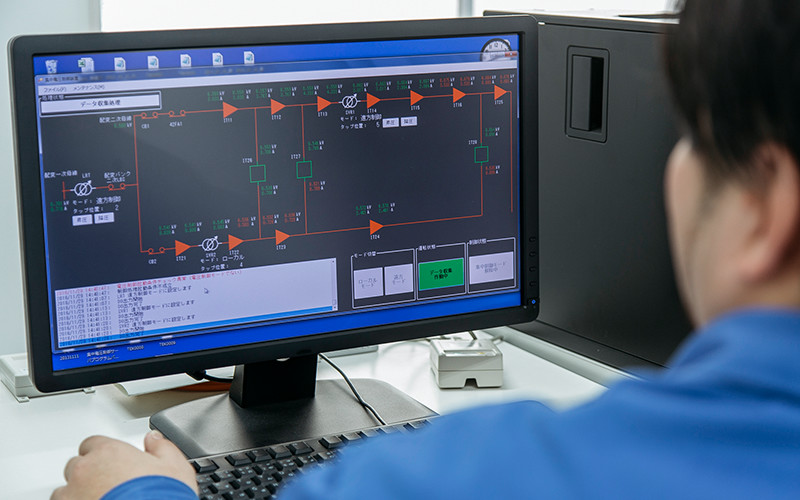
The background to the increase in the awareness of global environmental problems and energy saving is the effort for the spread of distributed power systems, including photovoltaic power generation, in Japan with the cooperation of the public and private sectors. While the shift from centralized power systems, such as conventional thermal power generation, to distributed power systems contributes to a reduction in CO2 emissions and transmission losses, it is creating new problems that we have not seen in the past in terms of the stabilization of distribution systems because power generation varies significantly depending on weather conditions. In particular, rapid voltage fluctuation is considered an issue that will become obvious relatively soon.
In order to resolve this issue, TAKAOKA TOKO verifies the control simulation technologies through field tests of PCSs (power conditioning system) and voltage regulators at distribution network test field in order to establish a control method for stabilizing the voltage of distribution systems.
Technology
Development of voltage control simulation technologies and power conditioning systems for distribution systems
As an effort to stabilize the voltage of distribution systems, we conduct verification tests at distribution network verification test stations where voltage regulators and PCSs for photovoltaic power generation are installed. In addition, we verify and validate the simulation results by developing an analysis model of the distribution network verification test station and comparing it to actual data using our simulation technology. In the future, we will study the optimization of the voltage of distribution systems and the coordination control among voltage regulators using this simulation technology.
As a product that realizes the sophistication of distribution systems and voltage control, we developed a prototype of a large-scale power conditioner using SiC elements. At present, we intend to develop a photovoltaic power generation system combined with solar cell panels as an electricity storage system combined with a lithium-ion rechargeable battery.
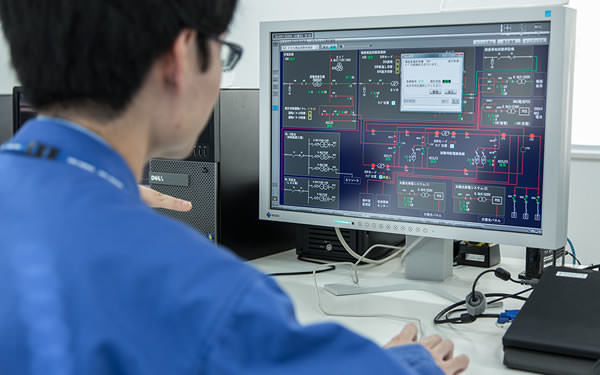
Profile
FDN (Future Distribution Network) Team
-
 Takuya MiyamotoResearch & Development Center of Technology DevelopmentDivision
Takuya MiyamotoResearch & Development Center of Technology DevelopmentDivision
Future Grid Technology Group -
 Yusuke YamashitaResearch & Development Center of Technology Development Division
Yusuke YamashitaResearch & Development Center of Technology Development Division
Future Grid Technology Group -
 Takuya OzakiResearch & Development Center of Technology Development Division
Takuya OzakiResearch & Development Center of Technology Development Division
Computer Analysis & High Power Testing Group
PCS (Power Conditioning System) Team
-
 Yutaka SugiuraResearch & Development Center of Technology Development Division
Yutaka SugiuraResearch & Development Center of Technology Development Division
Future Grid Technology Group -
 Yuta DoiResearch & Development Center of Technology Development Division
Yuta DoiResearch & Development Center of Technology Development Division
Future Grid Technology Group
Looking ahead to social issues of electricity infrastructure related to the spread of renewable energy
SugiuraPersonal computers and cell phones have spread globally, and we are enjoying the benefits of electricity so much that we cannot imagine daily life without it. On the other hand, as we all know, the use of the limited resources of coal, petroleum oil, and natural gas has shifted significantly to the use of renewable energy with an increase in concern over environmental problems and energy saving.
OzakiRecently, because of the implementation of the feed-in tariff scheme, an increased number of houses, commercial facilities, and business operators are selling the electricity generated from renewable energy. In addition, the full liberalization of electricity retail market has started, and the form of electricity is changing dramatically from the conventional model.
DoiOn the other hand, an electric power supply based on renewable energy has the problem that it is influenced by natural phenomena. For example, in the case of photovoltaic power generation, an excess of supply occurs, and the voltage of the distribution system becomes too high when the sun is shining, and the reverse takes place on a rainy or cloudy day. Therefore, the construction of a distribution system to cope with the fluctuations in the output of such unstable renewable energy is considered an issue that needs to be resolved relatively soon.
MiyamotoConventional power flow in distribution systems were only in one direction−from an electric power company to consumers. However, because of the spread of renewable energy and photovoltaic power generation systems, the power flow from an electric power company to consumers changed to both directions. The technology to establish stable distribution systems even in a complex and changing form of electric power is needed.
YamashitaIn light of this, my team conducts research and development on next-generation power distribution networks and the team that Mr. Doi works with develops power electronics devices; both teams are cooperating on a project to optimize voltage control.


Promoting the realization of the next-generation energy society through simulations of distribution system voltage control
MiyamotoIn order to resolve the issues related to distribution systems in the future, TAKAOKA TOKO has been advancing the study and product development of the optimization of distribution system voltage. We are composed of a group that collects and analyzes actual measured data obtained from distribution network test field (test field) and a group that constructs and simulates an analysis model of the test field so that we can validate both the analysis results and the observation study results to develop simulation technologies.
YamashitaThe simulation of the control of distribution system voltage that we perform at the test field is intended to create a simulation environment in anticipation of the dramatic fluctuations in voltage due to weather changes and to verify its validity.
OzakiThe test field has a capacity of approximately 1000 kVA. The advantage TAKAOKA TOKO offers is being able to simulate the control of distribution system voltage on this scale. However, the scale of an actual distribution system is ten to twenty times greater than that of the test field. We need to conduct simulations based on the assumption of different conditions and voltage fluctuation risks for practical realization. Therefore, we have to become skilled at developing simulation strategies.
MiyamotoIn addition, the longer power line connecting the distance of tens of kilometers becomes, the more likely the voltage is to fluctuate. In our research, we conduct simulations on the assumption of different lengths of distribution power line and outputs of disperse power of test field equipment, where imagination and expertise that cannot be numerically described are required.
YamashitaWe analyze destabilizing factors based on the results obtained at the test field and verify what is required for stabilization. It is important to practice a cycle of verifying the difference between the simulated value and actual measurement result to make use of it.
OzakiHigh quality electricity is typically supplied 24 hours a day, 365 days a year in today's society. Therefore, our mission is to continue to supply high-quality electricity. Although the world of simulation is assembled on the premise of no errors, if there is an error in the actual measurement data, we need to evaluate every possible aspect to reach an accurate conclusion. A huge number of trials and verifications are difficulties for us but also challenging.
MiyamotoMore importantly, voltage control is related to the infrastructure, so we need to secure diversified and high-level qualities of higher stability, efficiency, and functionality. In contrast, if only one of these elements is missing, the result can become a major disruption to society.


Constructing a system for the stable supply of renewable energy affected by weather
SugiuraWe have been studying the development of a stable electric power supply and the use of storage batteries in the construction of a new distribution system as part of the next-generation distribution system. The next-generation distribution system means a distribution system that offers higher stability and efficiency through detailed control.
DoiThe team that is developing power electronics devices is also conducting research and development of large-scale power conditioning systems (PCS) utilizing SiC (silicon carbide) to realize control of distribution systems. A PCS converts the direct current output from a photovoltaic module into stable alternating current. With distributed power systems, such as photovoltaic power generation systems becoming so common today, the challenge ahead is how to stably supply electricity with significant output fluctuations as influenced by weather conditions. PCS holds the key to this realization.
SugiuraSiC elements are being studied for development by various foreign element manufacturers, but Japan is making major progress in this field worldwide. We succeeded in developing a prototype of the PCS using SiC elements developed by a domestic element manufacturer.

DoiIn the future, based on the PCS using the SiC element we developed, we plan to set up a system combined with a solar cell module and storage battery.
SugiuraSiC elements were born tens of years ago but put into practical use only recently. The state-of-the-art technology is in the process of verification for generalization through discussions and research. In this project, many experiences are new to me, and the larger the scale of the project and the more difficult the project, the more flexible the ideas of young engineers must be. I am undertaking my work in the belief that we can solve problems if we concentrate TAKAOKA TOKO's knowledge. We hope young engineers will approach their work in high spirits.
DoiSince I can engage in the research and development of the most advanced field, I realize that the best stage where I can gain experience as an engineer is available. I would like to put together a team to continue the challenge of research and development in the spirit of innovation.

The stage of looking ahead to the needs of the times by young engineers
SugiuraThe use of communication technologies, including the Internet of Things (IoT) for controlling devices via the internet is one of the elements essential to this project. It's no surprise that PCSs are controlled via the internet.
YamashitaI have worked at this company for only two years and have already participated in research and development for the dynamic generalization of products incorporating advanced technologies and social responsibility. I would like students who will be my junior colleagues to know the culture of TAKAOKA TOKO where young people can participate.
SugiuraI think so, too. In a culture where young people can participate, there is an advanced environment and corporate culture where we can be highly receptive to the need for technologies and products 10 or 20 years from now and respond to such needs as soon as they become obvious. That is the attraction of TAKAOKA TOKO.
OzakiI feel blessed with an environment where we can engage in such advanced work.
MiyamotoTackling the development of innovative products that can surprise people, advanced technologies that defy the stereotypes, and actively participating in national projects are very challenging for me. Electrical engineers tend to work behind the scenes, but the stable supply of electric power is a very important factor and is essential to modern society.
SugiuraI hope TAKAOKA TOKO's backseat players will receive some attention.

Latest articles
-
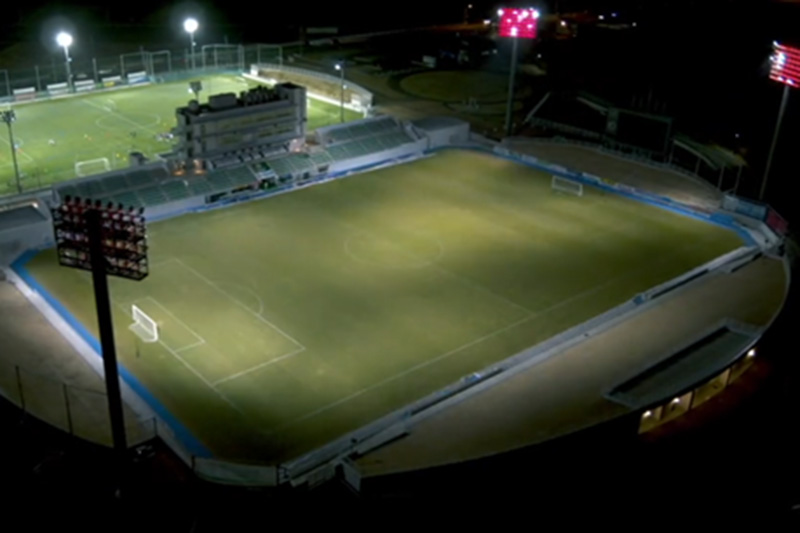 interviewProposal for new value via the first steel-tower-type full-color rendering illumination in JapanSince July in 2021, Prifoods Stadium in Hachinohe City, Aomori Prefecture has operated LED illumination equipment capable of the first steel-tower-type full-color light rendering in Japan. Takaoka Toko/Kyoya Denki/CADEC specific construction work consortium accepted an order for this equipment from Hachinohe City, and it was completed after nine months of work.
interviewProposal for new value via the first steel-tower-type full-color rendering illumination in JapanSince July in 2021, Prifoods Stadium in Hachinohe City, Aomori Prefecture has operated LED illumination equipment capable of the first steel-tower-type full-color light rendering in Japan. Takaoka Toko/Kyoya Denki/CADEC specific construction work consortium accepted an order for this equipment from Hachinohe City, and it was completed after nine months of work. -
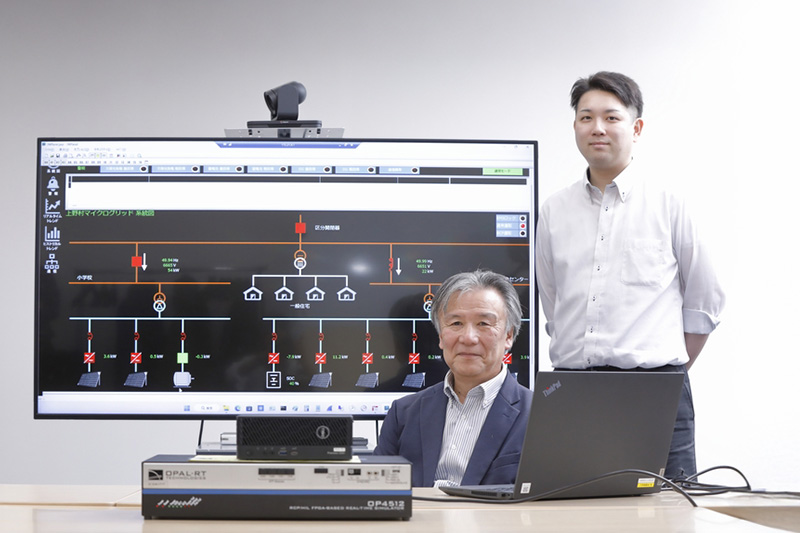 interviewBuilding a microgrid in Ueno Village, Gunma Prefecture, to Achieve Decarbonization and “Zero” Power Outages During a Disaster.The Sixth Strategic Energy Plan, a national policy, states that renewable energy is a main power source, and there is a need to expand the introduction of local power sources, including renewable energy. In recent years, the number of natural disasters in Japan has been on the increase, and a business continuity plan (BCP) is being emphasized for setting forth the methods and measures in advance to minimize the impact of an emergency and to ensure business continuity and a rapid recovery.
interviewBuilding a microgrid in Ueno Village, Gunma Prefecture, to Achieve Decarbonization and “Zero” Power Outages During a Disaster.The Sixth Strategic Energy Plan, a national policy, states that renewable energy is a main power source, and there is a need to expand the introduction of local power sources, including renewable energy. In recent years, the number of natural disasters in Japan has been on the increase, and a business continuity plan (BCP) is being emphasized for setting forth the methods and measures in advance to minimize the impact of an emergency and to ensure business continuity and a rapid recovery. -
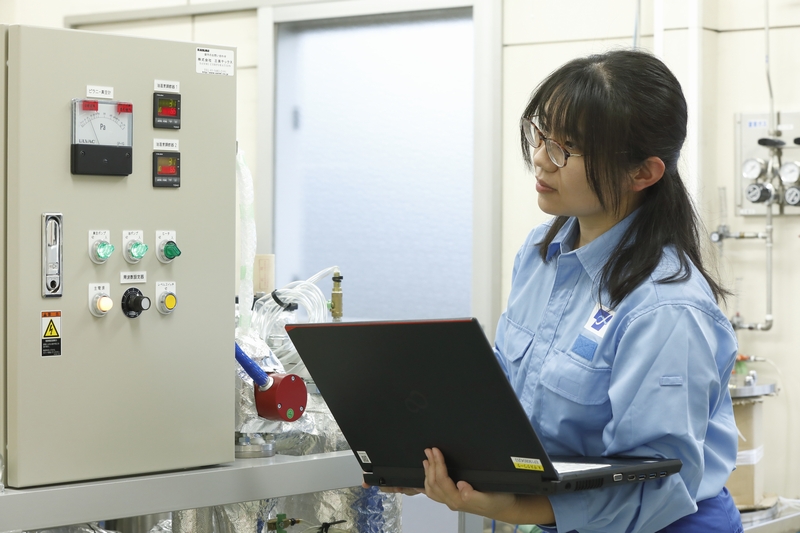 interviewRecycling technology of transformer oil aiming to achieve carbon neutralityNowadays, the work involved in carbon neutrality and the establishment of a recycling society is essential in business activities. The same trend is observed in the field of transformer oil. The international standard for the quality of transformer oil has been revised; there is now no distinction in quality between new transformer oil and recycled transformer oil (hereinafter “recycled oil”) abroad, which allows them to be treated equivalently.
interviewRecycling technology of transformer oil aiming to achieve carbon neutralityNowadays, the work involved in carbon neutrality and the establishment of a recycling society is essential in business activities. The same trend is observed in the field of transformer oil. The international standard for the quality of transformer oil has been revised; there is now no distinction in quality between new transformer oil and recycled transformer oil (hereinafter “recycled oil”) abroad, which allows them to be treated equivalently. -
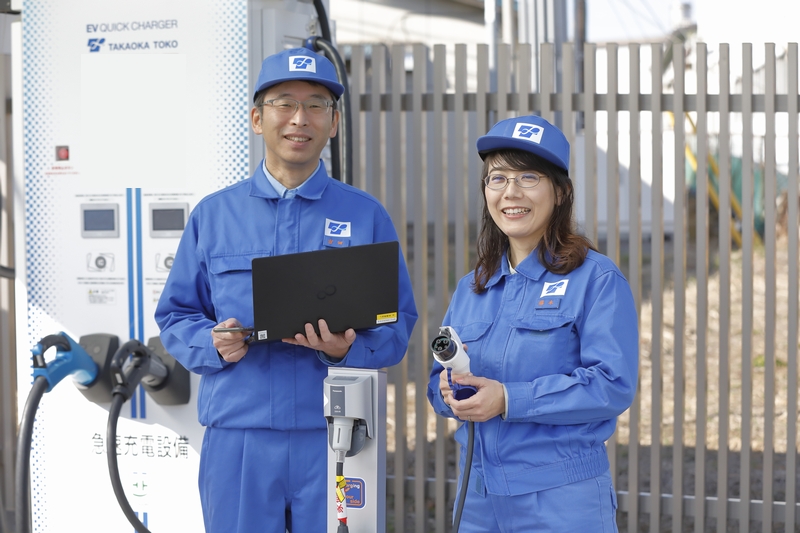 interviewWeCharge: EV charging management system that can be operated in large parking areasEfforts intended to achieve carbon-neutral levels have been made increasingly more often, which requires expansion of the EV charging infrastructure in order to propagate electric vehicles (hereinafter called “EV”).
interviewWeCharge: EV charging management system that can be operated in large parking areasEfforts intended to achieve carbon-neutral levels have been made increasingly more often, which requires expansion of the EV charging infrastructure in order to propagate electric vehicles (hereinafter called “EV”).
